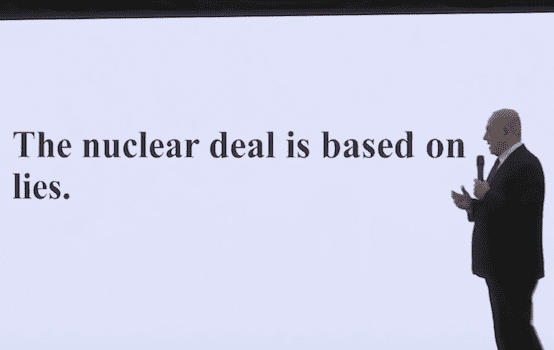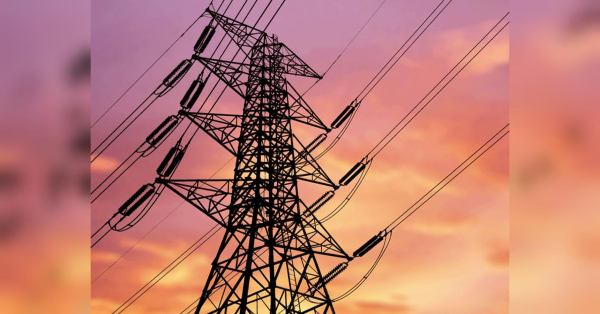
On Monday Israeli Prime Minister Benjamin Netanyahu delivered an alarming presentation, allegedly based upon hundreds of thousands of pages of documents and files, detailing an undeclared Iranian nuclear weapons program that Netanyahu claimed to have been recently acquired by Israeli intelligence. If true, the Israeli intelligence coup appears to have exposed a significant element of Iranian non-compliance with the so-called Iran nuclear agreement, formally known as the Joint Comprehensive Program of Action, or JCPOA, at a time when the very future of that agreement hangs in the balance.
On May 12 President Donald Trump is widely expected to announce a decision on whether the United States will remain as a state party of the Iran nuclear agreement. The president ran for office in 2016 on a campaign that derided the JCPOA as a “horrible deal”, and vowed to “rip it up” once he took office. Fulfilling this promise proved to be harder than expected. Trump ran into resistance from Congress, his own cabinet (former National Security Advisor H. R. McMaster, former Secretary of State Rex Tillerson, and Secretary of Defense James Mattis consistently cautioned against pulling out of the agreement) and the other signatories to the JCPOA, all of whom pointed out that Iran was complying with the terms of the agreement and, as such, the agreement was working in so far as it blocked Iran’s pathway to a nuclear weapon. As a result, Trump was compelled to hold off on withdrawal while his administration struggled to find consensus.
Consensus, as it was, was reached not by constructing a policy path that would allow the United States to remain in the JCPOA despite the president’s strong reservations, but rather by removing those in the president’s cabinet who did not support his policy on the Iran deal: McMaster was replaced by the noted Iran hawk, John Bolton, and Tillerson was ejected from the State Department and replaced by former CIA Director Mike Pompeo, who shares Trump’s position regarding the fate of the JCPOA.

Under the Iran Nuclear Agreement Review Act of 2015, the president must certify every 90 days that, among other things, Iran is “transparently, verifiably, and fully implementing the agreement, including all related technical or additional agreements.” Trump has been searching for a way to pin the blame of any U.S. decertification on Iran; Netanyahu’s presentation, both in timing and content, appears geared toward helping push President Trump toward a decision to withdraw.
But this was not a replay of the Israeli pressure tactics applied to the Obama administration in the weeks and months leading up to the signing of the JCPOA in July 2015, when Netanyahu traveled to the United States and spoke directly to the American Congress in an effort to derail the agreement. This time, Netanyahu was operating hand in hand with the president and secretary of state. The details of the Israeli intelligence operation, which unfolded “several weeks ago,” according to Netanyahu, were shared with American intelligence, and provided the background for Netanyahu’s phone conversation with Trump on April 28, and his meeting with Mike Pompeo on April 29.
The Israeli information challenges Iran’s compliance with its obligations as set forth in Annex 1 of the JCPOA, regarding “Past and Present Issues of Concern” —in short, the contentious question of whether Iran had ever sought to acquire a nuclear weapon. If Iran was shown to have lied, this line of argument goes, then the president, in good faith, could report to Congress that Iran was not in compliance with Annex 1 and, as such, could refuse to continue to issue a waiver regarding the lifting of economic sanctions.
Legally speaking, however, the Israeli argument, along with any attempt on the part of the Trump administration to rely upon the Israeli information used by Netanyahu in his presentation, does not hold water. The IAEA, in implementing the “Roadmap for Clarification of Past and Present Outstanding Issues”, had already thoroughly investigated the Amad Project and its alleged leader, Mohsen Fakhrizadeh, based upon information made available from member states (presumably including Israel). The conclusions reached by the IAEA—that the Amad Project was terminated in 2003, and that Fakhrizadeh went on the head up a new organization that made use of the same personnel as the Amad Project—were the same as made by Netanyahu. As Netanyahu noted, Iran denied the existence of the Amad Project to the IAEA.
What Netanyahu failed to say was that Iran backed up its denial by discussing the organization structures alleged to be part of the Amad Project in detail with the IAEA. Moreover, the IAEA conclusion “that, before the end of 2003, an organizational structure was in place in Iran suitable for the coordination of a range of activities relevant to the development of a nuclear explosive device” indicates that it was well aware of the possibility, if not probability, that Iran was not being fully forthcoming regarding its nuclear past, and yet opted to certify Iran as being compliant with the “Roadmap for Clarification of Past and Present Outstanding Issues.” Netanyahu’s presentation does not alter this outcome whatsoever.
Critical to any discussion as to the relevance of Netanyahu’s presentation is the issue of the credibility of the information he drew upon, as well as the source of that information—the Israeli intelligence services. From 1994 through 1998, while serving as an inspector with the United Nations Special Commission, I actively worked with Israeli intelligence, at the highest levels, on issues pertaining to Iraqi compliance with its obligation to disarm in accordance with relevant Security Council resolutions. My takeaway from that experience is that Israeli intelligence capabilities were, and are, some of the most advanced in the world when it comes to regional issues that have a direct bearing on its national security—both Iraq and Iran would fit into that category. I also found that the Israeli intelligence service, like all others, is fallible and prone to analytical error driven by domestic political imperative, failure in internal management oversight, and poor analysis on the part of those responsible for assessing the massive quantity of data that came into Israel’s possession.
Sometimes the Israelis hit homeruns—the successful intercept of ballistic missile guidance and control equipment in Jordan in November 1995 on the basis of an intelligence tip off from the Israelis is one such example; other times they struck out, such as the paper prepared for the International Atomic Energy Agency (IAEA) in 1997 on the reconstitution of Iraq’s nuclear weapons research and development infrastructure that proved to be 100 percent wrong.
In 1998, Israel agreed with the finding of UNSCOM inspectors that Iraq’s proscribed ballistic missile program had been eliminated as an operational threat, and yet four years later, in 2002, the Israelis had changed their mind, void of any new information, and re-assessed Iraq to have dozens of operational long-range missiles in an effort to bolster American justifications for invading Iraq. This only underscores the reality that the Israeli government was just as capable of skewing intelligence to meet a political objective as any other nation.
This personal experience colors my assessment of Netanyahu’s presentation on Iran. When discussing Iran and any allegations regarding past programs dedicated to developing nuclear weapons, one cannot dismiss the fact that Israeli fingerprints were on a previous trove of documents—the so-called “laptop of death”—that initiated the entire controversy about “alleged studies.”
The timing of Netanyahu’s presentation—a mere two weeks before Trump is scheduled to make his determination about the fate of the JCPOA—is suspect, as is the methodology used to introduce the intelligence material to the world. If this trove of documents is, in fact, what Netanyahu claims, then there are mechanisms in place via the JCPOA framework to address the legitimate concerns raised by their collective content. The Israeli government could have shared this information with any of the signatory parties to the JCPOA, who then could have requested a meeting of the Joint Commission of the JCPOA where the issue of Iranian compliance would then be discussed. While the process involved is a cumbersome one, in the end any failure of the part of Iran to constructively engage would result in the matter being taken to the Security Council, where sanctions could be re-imposed.
Likewise, the Israelis could have taken their information straight to the IAEA, which is empowered by the JCPOA to investigate “activities inconsistent with the JCPOA” at “locations that have not been declared under the safeguards agreement or Additional Protocol.” Netanyahu’s ramshackle building in the Shorabad District of southern Tehran would seem to fit that description perfectly, despite the seeming illogic of Iran hiding its most sensitive documents in such an insecure location. Again, any substantive Iranian noncompliance with the IAEA’s demands to investigate would eventually lead to the resumption of economic sanctions against Iran.
The legal and practical fallacies inherent in Netanyahu’s presentation may ultimately not matter. In the end, Netanyahu was addressing an audience of one—Donald Trump. This “intelligence driven briefing,” regardless of the veracity of the information used to underpin it, will be used by Trump to bolster a decision he has already made to withdraw from the JCPOA, setting America and the world on a path for which there can only be one destination—war with Iran. Once Trump withdraws from the JCPOA, there will be no turning back; Israel’s hyped up claims will never be subjected to the kind of scrutiny decisions of this magnitude would seem to demand. This was, and is, Netanyahu’s ultimate objective, which is itself a sad commentary on a president whose campaign was anchored in opposition to the flawed intelligence used to justify the Iraq War. Sadly, one can only observe, “Mission Accomplished.”
Scott Ritter is a former Marine Corps intelligence officer who served in the former Soviet Union implementing arms control treaties, in the Persian Gulf during Operation Desert Storm, and in Iraq overseeing the disarmament of WMD. He is the author of Deal of the Century: How Iran Blocked the West’s Road to War.
Sourse: theamericanconservative.com






